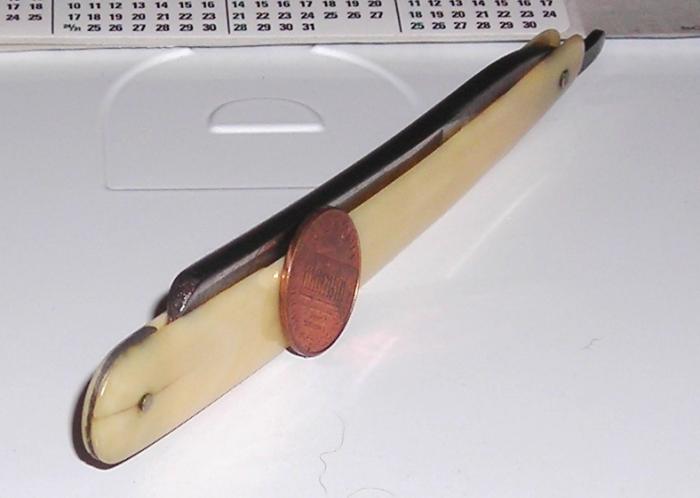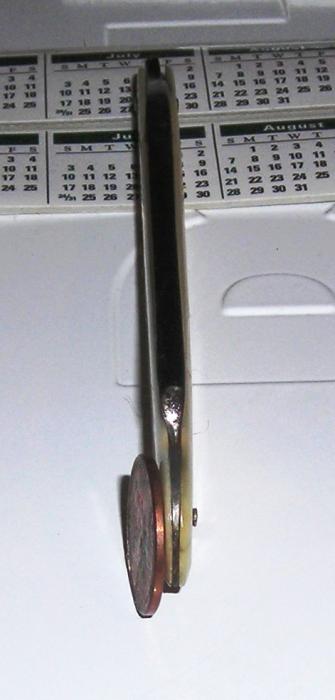Results 1 to 10 of 16
Hybrid View
-
12-12-2010, 01:55 AM #1
 How do you tell if scales are ivory?
How do you tell if scales are ivory?
I have several sets of scales that sort of fit the bill. Is there a way to gage what the material is?
-
12-12-2010, 02:09 AM #2
-
-
12-12-2010, 03:20 AM #3

With good photos, it can be pretty easy to tell. Ivory scales are usually very thin. They will not have any pores (pores indicate bone). They may or may not have a grain to them. They are hard and smooth; once you've seen the real thing it's very easy to identify.
-
The Following User Says Thank You to holli4pirating For This Useful Post:
jcsixx (12-12-2010)
-
12-12-2010, 05:13 AM #4aka shooter74743




- Join Date
- Sep 2009
- Location
- SE Oklahoma/NE Texas
- Posts
- 7,285
- Blog Entries
- 4
Thanked: 1936
Dylan's right on, once you see it, you will never mistake it. Here's one of my two to show what he is talking about on how thin they are, notice the thickness of the penny:



 Southeastern Oklahoma/Northeastern Texas helper. Please don't hesitate to contact me.
Southeastern Oklahoma/Northeastern Texas helper. Please don't hesitate to contact me.
Thank you and God Bless, Scott
-
The Following User Says Thank You to ScottGoodman For This Useful Post:
jcsixx (12-12-2010)
-
12-12-2010, 06:41 AM #5

it's true ivory is very strong and flexible, and expensive, so most of the time scales are rather thin.
but in rare cases you can find thick ivory even on production razors and not just the customs. here's an example of both:
thin ones are from early 1800s, thick ones from late 1800s, both are sheffields.
-
The Following 2 Users Say Thank You to gugi For This Useful Post:
BuddyRockefella (12-14-2010), jcsixx (12-12-2010)
-
12-12-2010, 06:50 AM #6
-
12-12-2010, 07:30 AM #7
-
12-12-2010, 09:29 PM #8Senior Member

- Join Date
- Nov 2010
- Posts
- 139
Thanked: 23
ivory also has a very faint cross hatch pattern when the light hits it from the right angle caused by it's structure and the way it's cut i's also how the exrperts can tell what animal and how old but i'm sure if that's possible after cutting and yes mine have the same crack that they all seem to have at the wedge


 LinkBack URL
LinkBack URL About LinkBacks
About LinkBacks






 Reply With Quote
Reply With Quote



